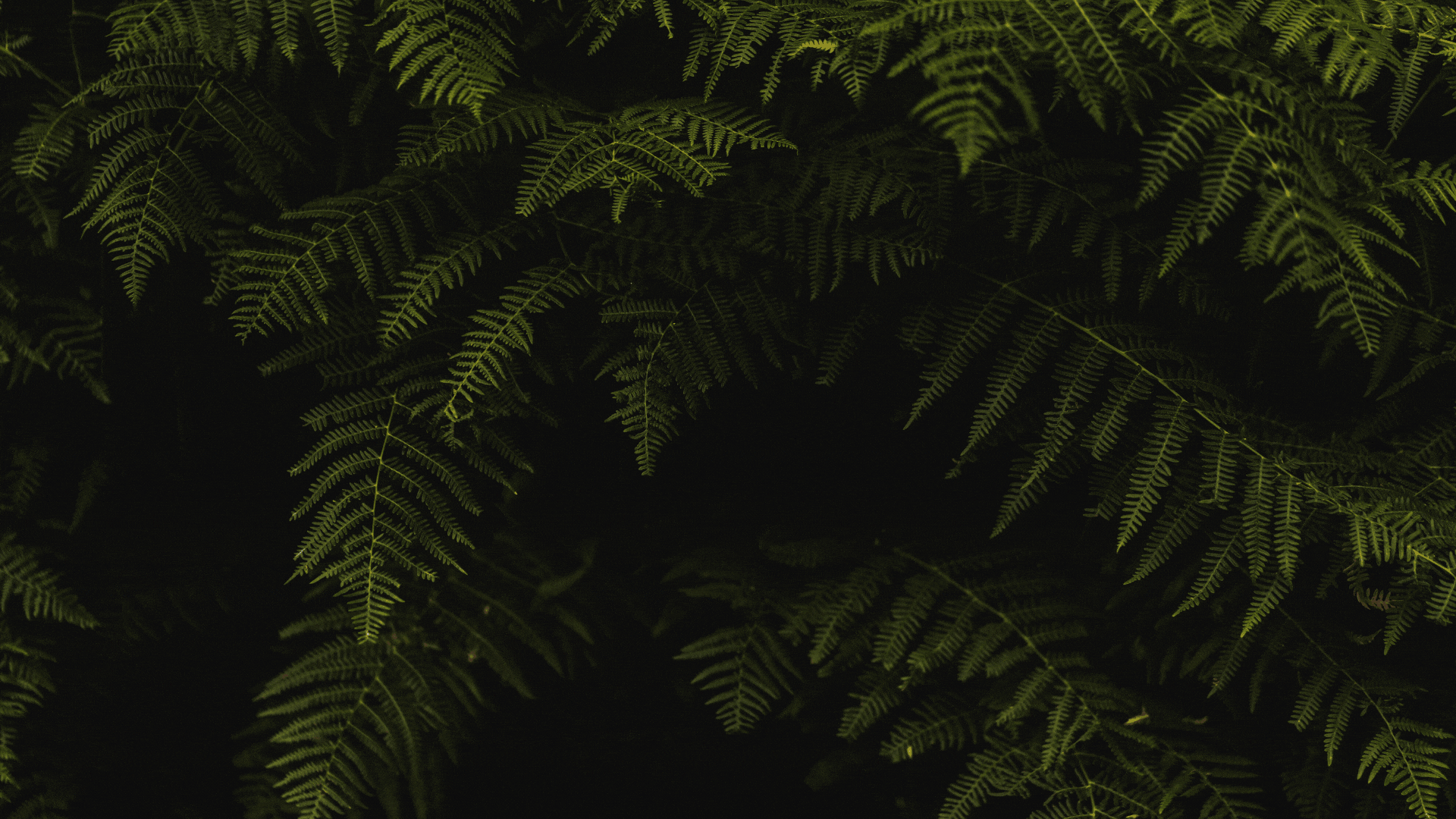 Lavender is a highly popular plant thanks to its rich, calming aroma. The plant has been cultivated for hundreds of years and is used in a variety of ways, but it’s mainly known for its fragrant flowers and leaves. It’s a perfect plant to use in aromatic herb gardens, pollinator gardens, or even as a makeshift hedge plant. Whatever the case, you’ll be rewarded with vibrant flowers and the unique, soothing smell of lavender.
Lavender is a highly popular plant thanks to its rich, calming aroma. The plant has been cultivated for hundreds of years and is used in a variety of ways, but it’s mainly known for its fragrant flowers and leaves. It’s a perfect plant to use in aromatic herb gardens, pollinator gardens, or even as a makeshift hedge plant. Whatever the case, you’ll be rewarded with vibrant flowers and the unique, soothing smell of lavender.
IDENTIFY NEW PLANTS WITH PLANTSNAP
What Is the Lavender Plant?
There are many species of lavender, all in the genus Lavandula. Along with other aromatic herbs like sage and rosemary, lavender is right at home in the mint family, Lamiaceae. Lavender grows naturally in Europe, northern and eastern Africa, southwest Asia, and India.
Many types of lavender are perennial herbs, so they persist year after year in the garden. Others are annual species that need to be replanted in the spring. Lavender typically doesn’t grow to be that tall, but instead, it forms dense clumps with numerous small stems. It usually has evergreen foliage that can be enjoyed throughout the year and produces abundant flowers in the summer.
Caring for Lavender
In general, lavender is quite easy to care for as long as it’s kept in the right conditions. Plant lavender in full sun with good drainage, and water the soil only after it’s almost completely dry. If you follow these steps, your lavender plant should thrive! Lavender only grows in temperate climates and doesn’t like the heat and humidity of the tropics. All in all, lavender is a very easy plant to take care of once established. Click here for more details about lavender care.
Some of the Best Lavender Species
With 47 different species, the genus Lavandula isn’t the most diverse group of plants out there. Certain species have been cultivated for millennia, dating all the way back to ancient Greece. These days, several species are commonly grown in gardens, some for their attractive flowers, and others for their especially rich scent. Here are some of the most popular lavender species, where they grow, and what they look like!
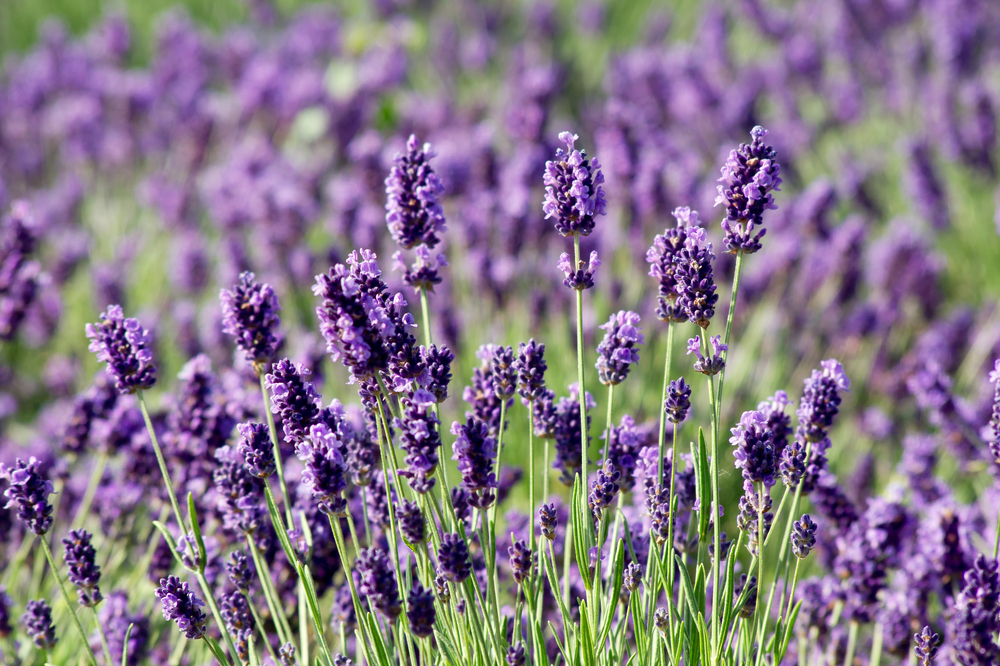
English Lavender (Lavandula angustifolia)
Characteristics: English lavender is also called common lavender as it is the most commonly planted species. There are many varieties that have been cultivated to accentuate different aspects of the plant, which we’ll discuss later. This species is known for its aroma and violet-colored flowers. You can see this species growing in massive fields in the Provence region of France.
Native To: Despite its name, English lavender is native to the Meditteranean. It gets its name from the fact that it grows especially well in England’s cooler climate.
Size: Grows up to 1 meter tall and wide.
USDA Hardiness Zone: 5 – 9
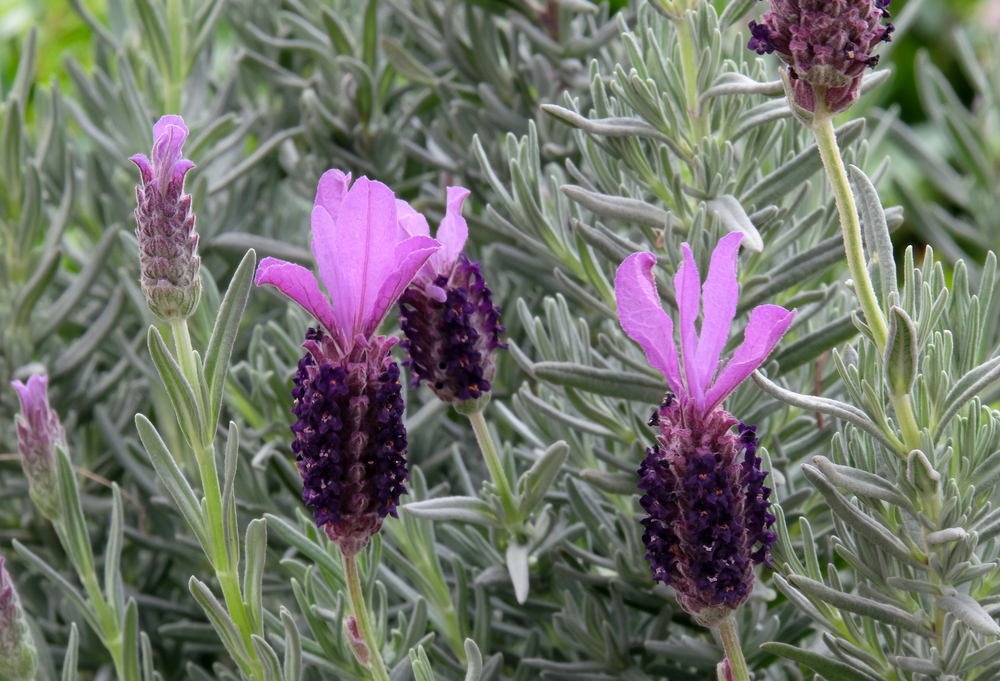
French Lavender or Spanish Lavender (Lavandula stoechas)
Characteristics: This species can withstand higher heat and humidity than English lavender. It’s mainly grown for its silvery leaves which are especially aromatic. It also has characteristic “ears” growing on top of the flower heads, which are colored bracts that help pollinators find the small flowers.
Native To: The Mediterranean and Northern Africa.
Size: Up to 60 cm (2 feet) tall mounds.
USDA Hardiness Zone: 8 – 9
Fringed Lavender (Lavandula dentata)
Characteristics: The name “dentata” means “toothed,” which alludes to its serrated leaves, which is also hinted at by this species’ common name. Fringed lavender has aromatic leaves that emit a hint of rosemary and camphor, and grows almost year-round.
Native To: Eastern and Southern Spain.
Size: Just under a meter (3 feet) tall.
USDA Hardiness Zone: 8 – 11
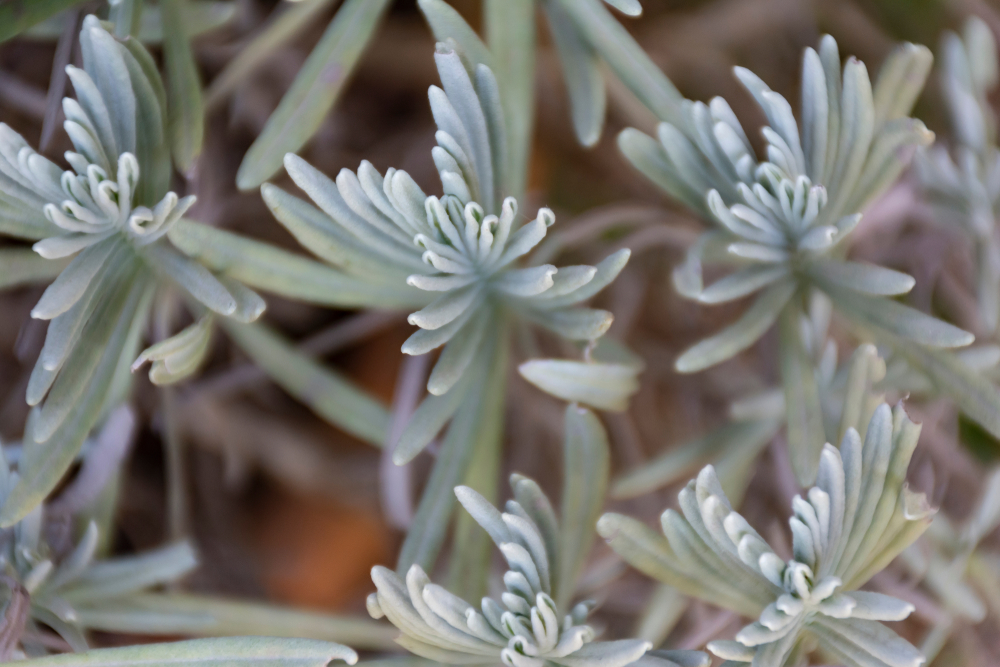
Portuguese Lavender (Lavandula latifolia)
Characteristics: Portuguese lavender grows long, lilac-colored flower spikes. It has a richer, more pungent aroma than other lavender species.
Native To: Western Mediterranean
Size: Up to 1 meter (3 feet) tall.
USDA Hardiness Zone: 6 – 8
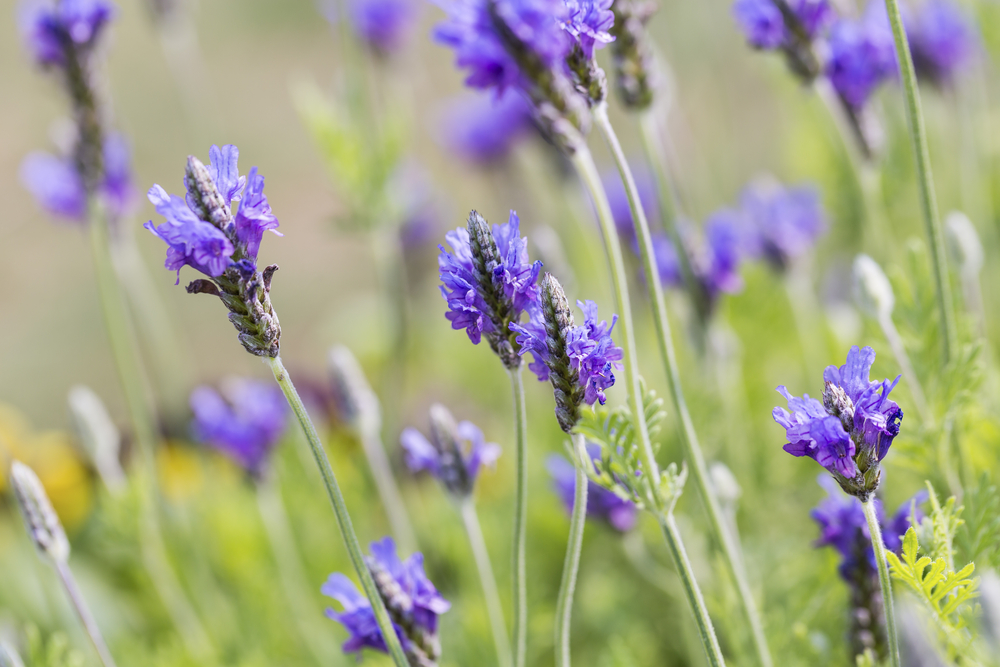
Egyptian Lavender (Lavandula multifida)
Characteristics: Egyptian lavender has very long, pale-colored flower stalks. Among nearly all lavender species, this one has the highest tolerance of summer heat and humidity. In places with warm winters, Egyptian lavender will bloom year-round.
Native To: Western and Southern Mediterranean
Size: Up to 60 cm (2 feet) tall
USDA Hardiness Zone: 8 – 10
Types of English Lavender (Lavandula angustifolia)
Through centuries of cultivation, humans have created an astounding amount of English lavender varieties. There is a wealth of flower colors and sizes to choose from depending on the variety.
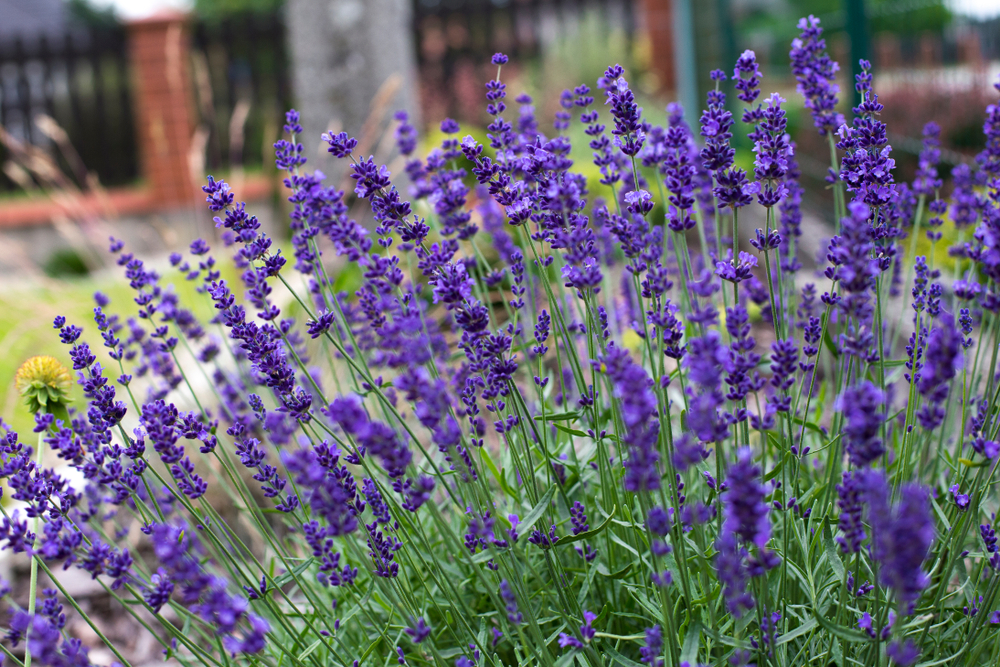
Hidcote
Characteristics: This is a dwarf variety of lavender, so it grows much smaller than most. It’s perfect for a low hedge and can withstand hot, dry climates. It’s also a good choice to grow in pots.
Flower Color: Produces dark purple flowers that bloom only once a year.
Size: 0.5 meters (1.5 feet) tall
USDA Hardiness Zone: 5 – 9
Munstead
Characteristics: Similar to Hidcote, Munstead is also tolerant of high heat and dry climates. It produces tall, slender flower stalks that sway in the breeze and contrast nicely against its silvery-green foliage.
Flower Color: Blue-purple flowers bloom twice a year, once in late spring and again in mid-late summer.
Size: 0.6 meter (2 feet) tall
USDA Hardiness Zone: 5 – 9
Loddon Blue
Characteristics: Loddon Blue is more fragrant than most varieties. It is usually grown for its aromatic properties, but also for its gray-green foliage and flower color.
Flower Color: This variety has characteristic blue-purple flowers that bloom continuously through the summer.
Size: 0.6 meter (2 feet) tall
USDA Hardiness Zone: 4 – 9
Lavenite Petite
Characteristics: Lavenite Petite is grown for its dense, bushy habit and long flower stalks. The flower heads are large and bushy as well. This variety needs to be trimmed regularly to take advantage of its flower production.
Flower Color: Intense violet-colored flowers that are highly aromatic.
Size: Up to 1 meter (3 feet) tall
USDA Hardiness Zone: 5 – 9
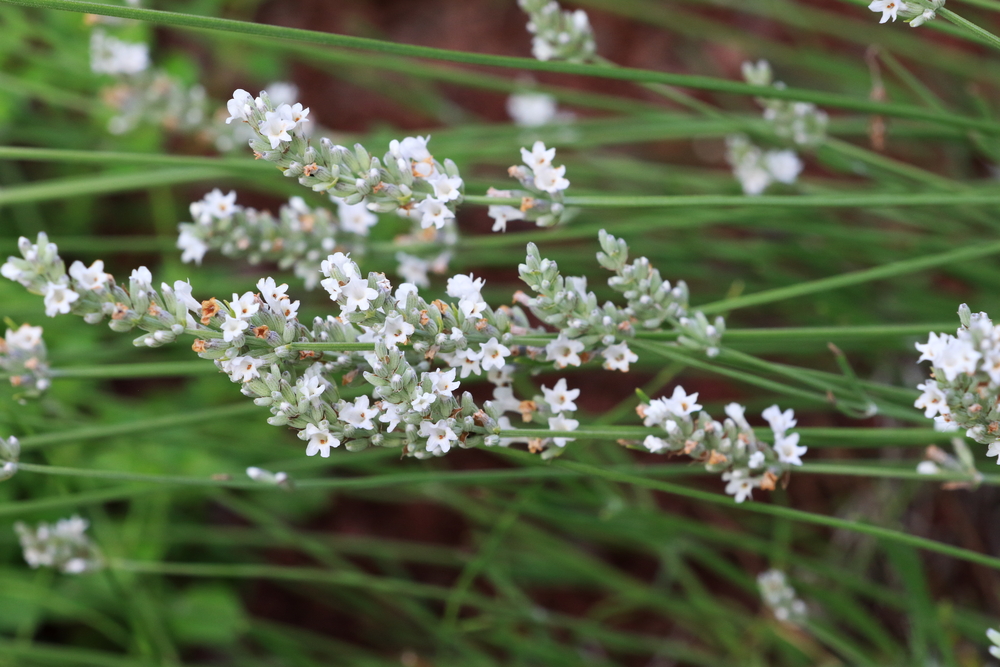
Nana Alba
Characteristics: Nana Alba is another small variety, forming low-lying dense clumps. Its sweet scent is also characteristic, and it’s a perfect choice for flower beds or pots.
Flower Color: This variety has unique white flowers that bloom during summer.
Size: 30 cm (1 foot) tall
USDA Hardiness Zone: 5 – 8
Betty’s Blue
Characteristics: Betty’s Blue has long, stiff flower stalks and a delicate, sweet smell. It’s also very hardy compared to other varieties.
Flower Color: Despite the name, these flowers are pure purple and not blue.
Size: About 60 cm (2 feet) tall
USDA Hardiness Zone: 5 – 9
Royal Purple
Characteristics: Royal purple is named for the color of its flowers. The entire plant is rather thin and light and can grow to be quite tall. The flower stalks alone can be up to a foot in length. It retains its scent and color for years after drying, so it’s the ideal variety to use in a potpourri or sachet.
Flower Color: Dark purple flowers that bloom between spring and summer.
Size: Easily 1 meter (3 feet) tall, and over 1 meter wide.
USDA Hardiness Zone: 5 – 11
Twickel Purple
Characteristics: This variety gets its name from Twickel Castle in the Netherlands where it was first cultivated. It’s a very large plant that can get a bit unruly if not maintained, so you must prune it regularly.
Flower Color: Bright violet or blue flowers on long stems.
Size: Just under one meter (2.5 feet) tall
USDA Hardiness Zone: 5 – 8
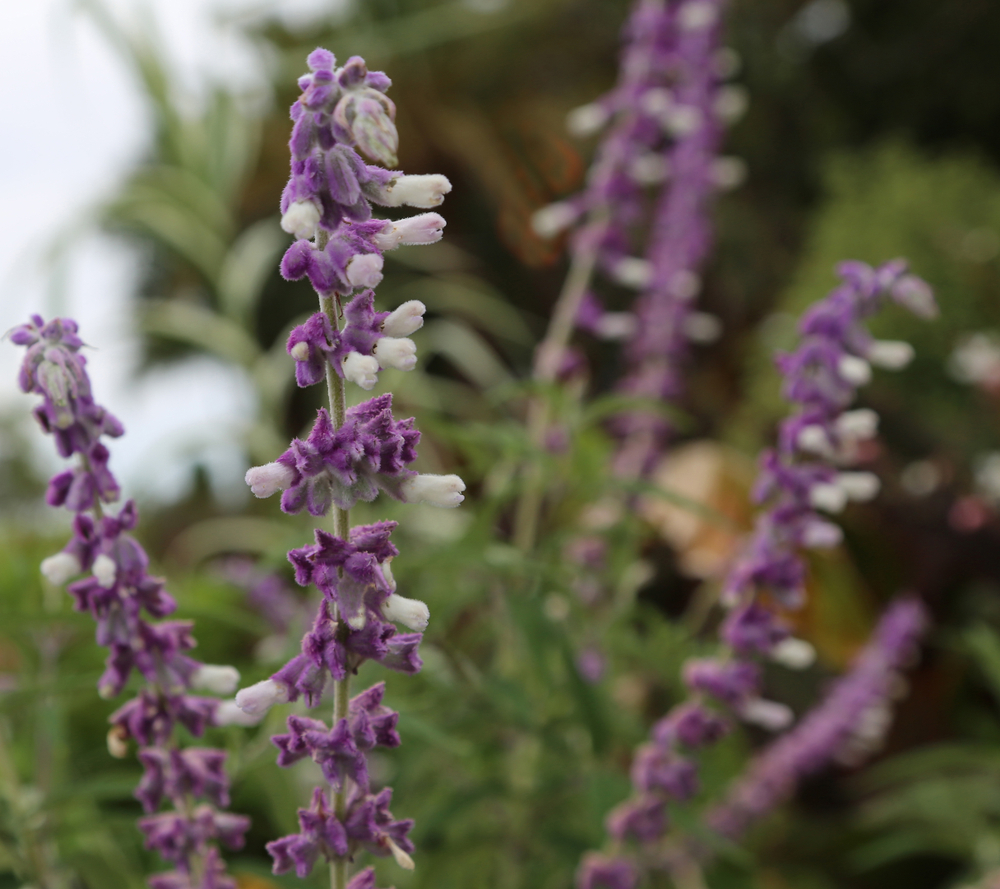
Royal Velvet
Characteristics: Royal velvet is a stunning dwarf variety and has long flower stalks atop short, bushy foliage. This is another variety that’s great for drying, as it retains its aroma for a long time after harvesting.
Flower Color: Silvery purple flowers that bloom for several weeks.
Size: 30 cm (1 foot) tall
USDA Hardiness Zone: 5 – 10
Miss Katherine
Characteristics: This medium-sized variety is tolerant of hot conditions and dry soil. It also boasts a unique flower color and strong scent.
Flower Color: Dark to light pink flowers that bloom once a year.
Size: 60 cm (2 feet) tall
USDA Hardiness Zone: 5 – 9
Folgate
Characteristics: This medium-sized variety is pretty hardy, and is able to withstand cold winters. It has evergreen foliage that stays vibrant throughout the year.
Flower Color: Deep purple flowers that bloom once or twice in the year.
Size: 60 cm (2 feet) tall
USDA Hardiness Zone: 5 – 9
Rosea
Characteristics: Rosea is commonly planted among roses and peonies. It has large, fluffy flower heads with unique flowers, and is quite hardy.
Flower Color: Rose-pink flowers that bloom once a year.
Size: Up to 60 cm (2 feet) tall.
USDA Hardiness Zone: 5 – 8
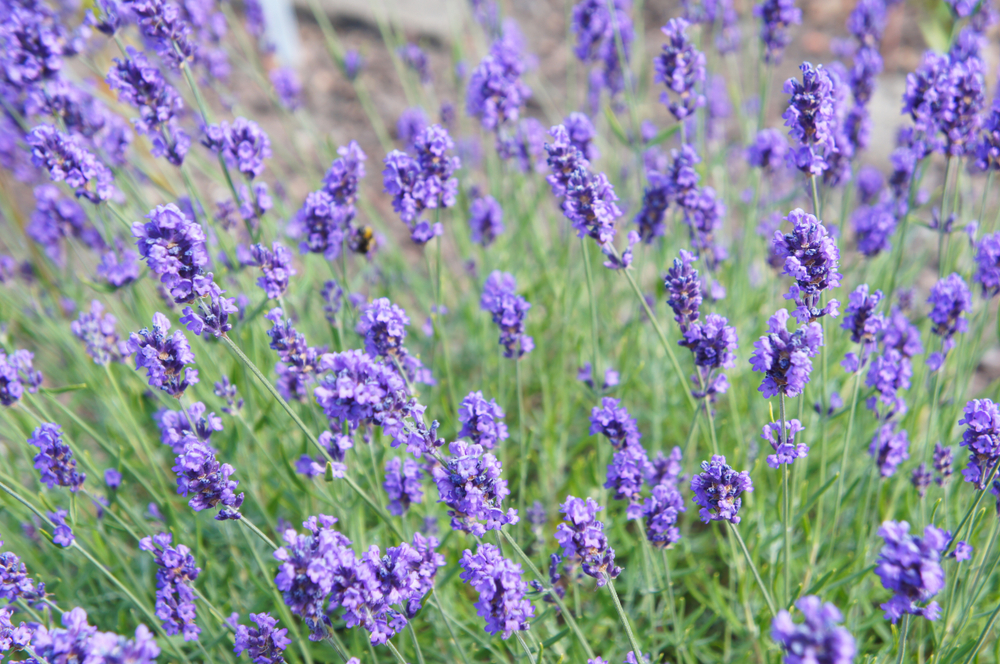
Melissa Lilac
Characteristics: Melissa lilac has graceful, fluffy flowers and fragrant foliage, especially when brushed against. The flowers contrast well with its silvery-green foliage. This variety does best when pruned regularly.
Flower Color: Lilac-colored flowers that bloom in the summer.
Size: 60 cm (2 feet) tall
USDA Hardiness Zone: 5 – 8
Arctic Snow
Characteristics: This variety grows dense, globular clumps with silvery-green foliage. It’s perfect for use as a hedge or along walkways.
Flower Color: The flower color of this variety is where it gets its name. It has dense flower stalks with bright white flowers.
Size: 60 cm (2 feet) tall
USDA Hardiness Zone: 7 – 10
Little Lottie
Characteristics: This little variety is a perfect choice if you’re tight on space. It doesn’t grow too tall or wide, and won’t overgrow neighboring plants.
Flower Color: Dark pink flowers on stiff, upright flower stalks.
Size: Up to 60 cm (2 feet) tall
USDA Hardiness Zone: 4 – 9
Blue Mountain White
Characteristics: Another variety with white flowers, this one is remarkably easy to care for, as long as it gets full sun. It forms spreading foliage and long, upright flower stalks. The long stems are ideal for cutting and drying and remain quite fragrant after harvesting. It’s also drought-tolerant!
Flower Color: White flowers that bloom all summer long, into the fall.
Size: Up to a meter (3 feet) tall
USDA Hardiness Zone: 5 – 11
Thumbelina Leigh
Characteristics: This is one of the densest varieties of lavender. Being rather small, it’s a good choice to grow in containers as well.
Flower Color: Produces dark blue-purple flowers that bloom three times a year.
Size: 30 cm (1 foot) tall
USDA Hardiness Zone: 5 – 10
Beechwood Blue
Characteristics: This type of lavender produces abundant flowers that smell sweeter than most other varieties. It does, however, need consistent pruning, full sun, and good air circulation to do well.
Flower Color: Blue-violet flowers that bloom during summer.
Size: 60 cm (2 feet) tall
USDA Hardiness Zone: 6 – 11
Types of French Lavender (Lavandula stoechas)
Like English lavender, French lavender has been cultivated into many different varieties. The “ears” on top of the flower heads display a variety of colors, sizes, and shapes. Keep reading to learn about even more varieties of lavender!
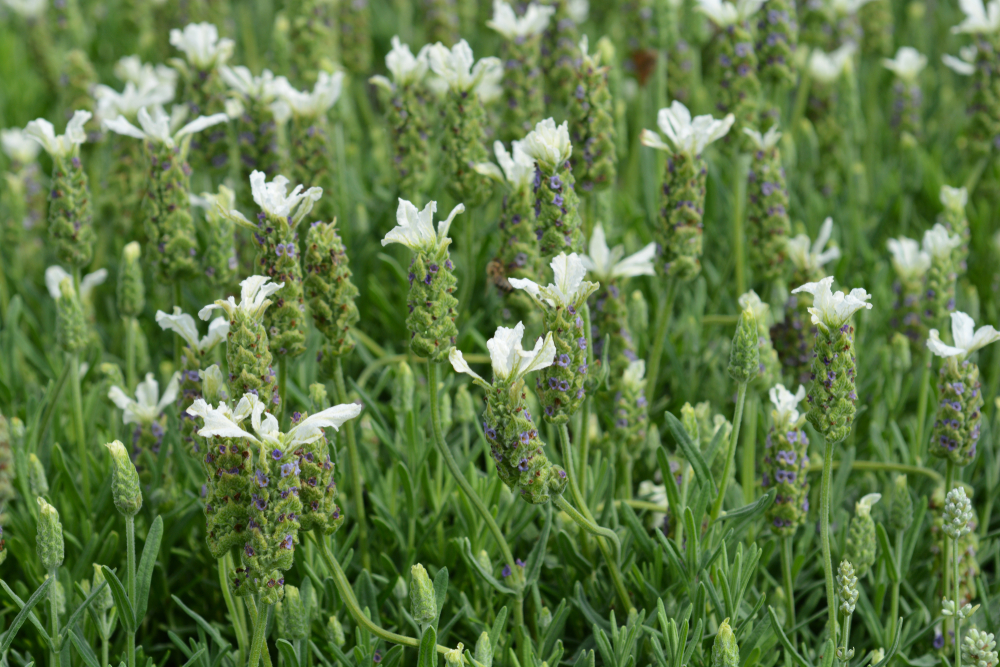
Ballerina
Characteristics: This evergreen variety is originally from New Zealand. It has silvery-green foliage and large, white ears atop the flower heads.
Flower Color: Pinkish-purple flowers that bloom for a long time from spring through summer.
Size: 1 meter (3 feet) tall
USDA Hardiness Zone: 8 – 10
Kew Red
Characteristics: Kew Red is a compact variety that boasts one of the most unique flower colors among all types of lavender. Its small size makes it perfect for containers and flowerbeds. It’s also very heat and drought-tolerant, but it needs full sun and good air circulation.
Flower Color: Scarlet red flowers with pink ears that bloom during summer.
Size: 40 cm (1.5 feet) tall
USDA Hardiness Zone: 7 – 9
Anouk
Characteristics: Anouk is another dwarf variety of lavender. It produces shiny, silvery foliage and long, sprawling stems. It’s a great choice to plant as low hedges or edging along pathways.
Flower Color: Stunning deep purple flowers that bloom mostly in the spring.
Size: 40 cm (1.5 feet) tall
USDA Hardiness Zone: 7 – 10
Portuguese Giant
Characteristics: This variety is true to its name. It comes from Portugal and is one of the larger types of lavender around. It’s one of the few that grows taller than it does wide. The flower stalks easily grow to be a foot long, and the flower heads are large and sturdy.
Flower Color: Classic lavender-colored flowers with a long bloom period, from spring to fall.
Size: Easily up to a meter (3 feet) tall, and often taller.
USDA Hardiness Zone: 7 – 10
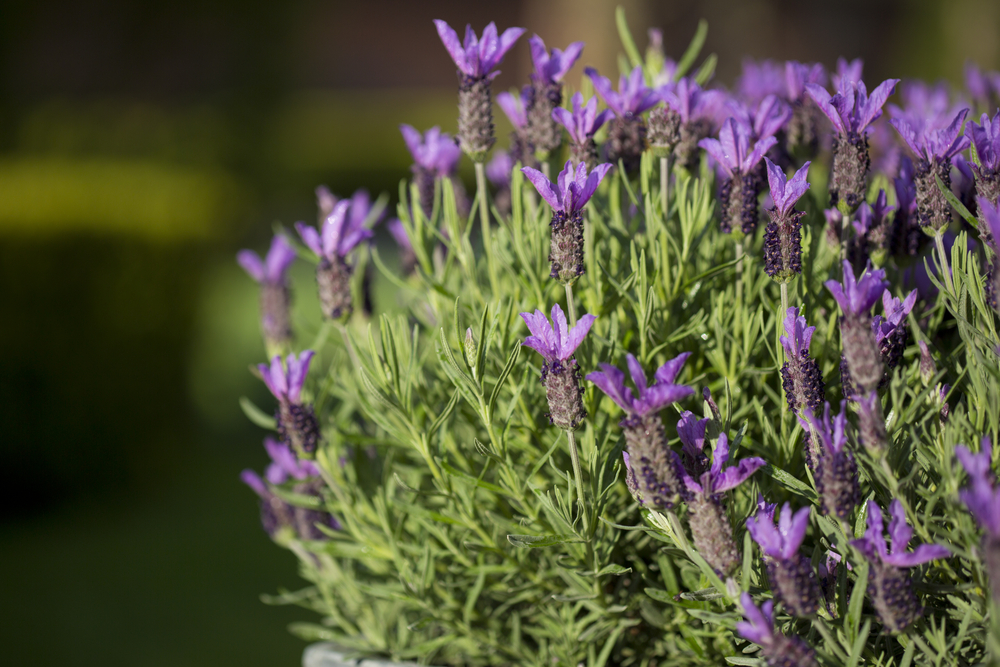
Fathead
Characteristics: This variety of lavender is not as hardy as most other types, but it’s incredibly fragrant. It has silvery, gray-green evergreen foliage that forms dense clumps, and large flower heads.
Flower Color: Fathead produces rich, deep violet flowers that contrast nicely with its pink ears.
Size: 60 cm (2 feet) tall
USDA Hardiness Zone: 8 – 9
Types of Lavandin (Lavandula x intermedia)
Lavandin is a natural hybrid between English and Portuguese lavender. Although this lavender type occurs in nature, people cultivate it extensively due to its intense aroma and high essential oil content. Just like English and French lavender, many varieties of lavandin have been cultivated.
Hidcote Giant
Characteristics: This is a larger variety of lavandin, with flower stalks that are up to a foot long. It is an award-winning plant thanks to its dense clumps of brightly colored flowers and strong, sweet scent. It’s an excellent variety to plant in larger herb gardens, or along pathways with lots of room.
Flower Color: Vibrant purple flowers that bloom in mid to late summer.
Size: Up to 1 meter (3 feet) tall
USDA Hardiness Zone: 5 – 8
Impress Purple
Characteristics: Impress Purple is another large variety of lavandin and produces long, upright flower stalks. The flowers themselves are spread out quite a bit, giving the plant a light, graceful look and feel. It’s perfect for flower arrangements and dried lavender.
Flower Color: Dark purple flowers that bloom once a year.
Size: Up to 1 meter (3 feet) tall
USDA Hardiness Zone: 5 – 9
Seal
Characteristics: This is easily one of the largest varieties out of all types on our list. Its dark green foliage contrasts nicely with the flowers, which grow on stalks that can easily reach over a foot long. Because it’s so big, it needs a lot of space in the garden or else it will take over.
Flower Color: Bright purple flowers that bloom in summer.
Size: 1.5 meters (4-5 feet) tall
USDA Hardiness Zone: 5 – 8
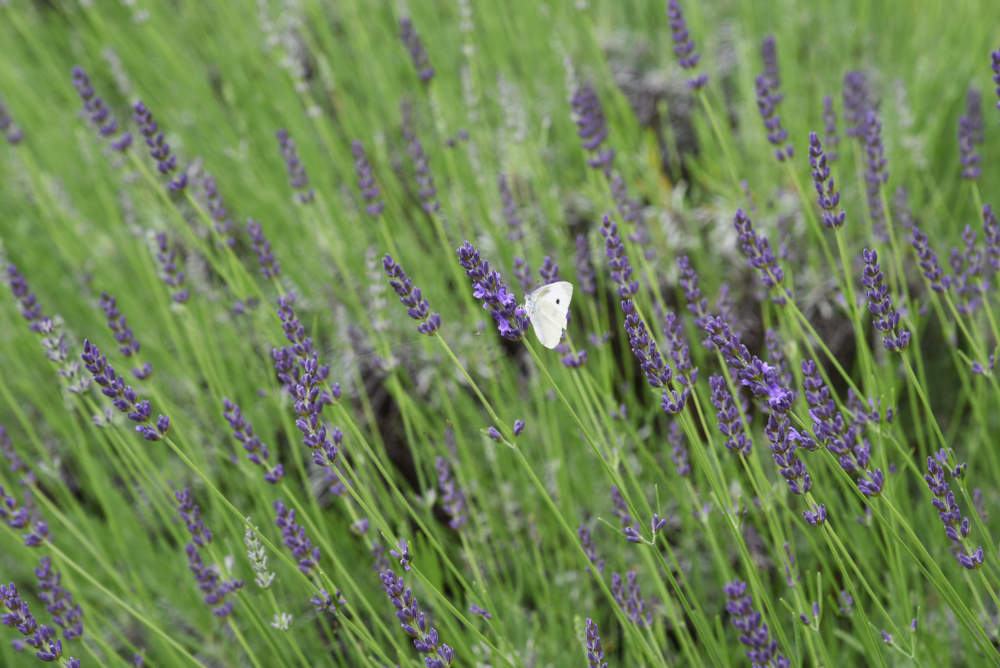
Grosso
Characteristics: Grosso is very similar to Impress Purple, but has lighter colored flowers and is easier to grow. In fact, it’s probably the most commonly cultivated type of lavender out there. It is grown commercially for its essential oils.
Flower Color: Light purple flowers that bloom in the early summer.
Size: 1 meter (3 feet) tall
USDA Hardiness Zone: 6 – 10
Super
Characteristics: Super is another one of the larger varieties of lavandin. It produces flower stalks and heads that aren’t all that large, but the flowers themselves are quite big and space out from one another. This variety is said to produce the highest quality essential oil, although it doesn’t produce quite as much as other types.
Flower Color: Light violet-blue flowers.
Size: Over a meter (3 feet) tall
USDA Hardiness Zone: 5 and above
Phenomenal
Characteristics: This variety is one of the newer ones on the market, and is probably named for its phenomenal tolerance of conditions. It’s exceptionally tolerant of heat, cold, drought, and humid weather, making it a breeze to grow in almost any condition.
Flower Color: Bright blue-purple flowers produced on long stalks.
Size: 1 meter (3 feet) tall
USDA Hardiness Zone: 4 – 9
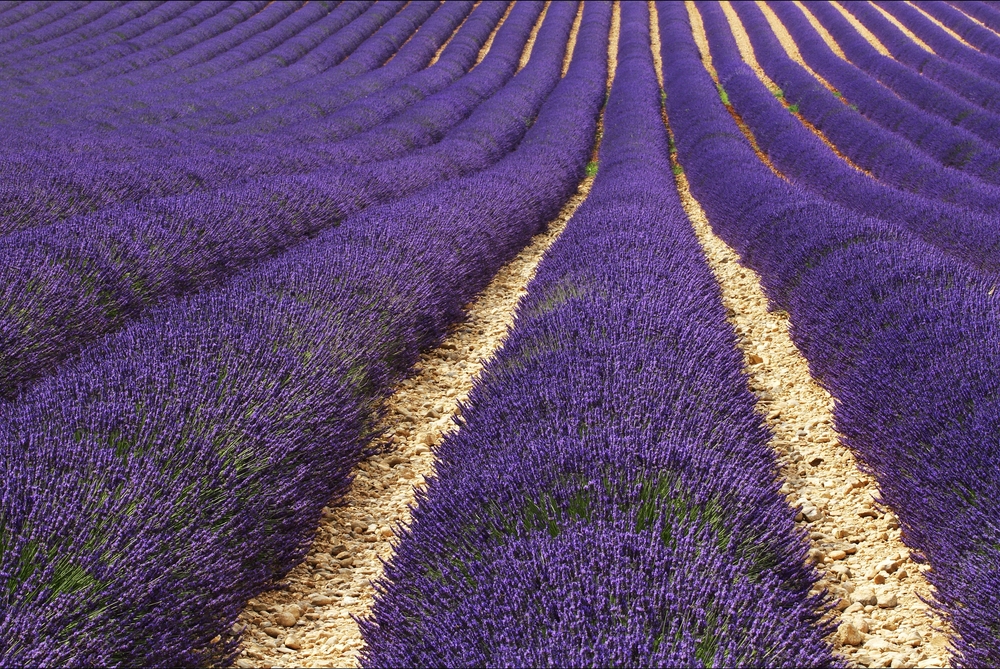
Provence
Characteristics: Along with English lavender, this variety of lavandin is grown extensively in the Provence region of France, hence its name. It has an intoxicating aroma and forms dense, globe-shaped clumps of evergreen foliage. Provence lavandin is also very tolerant of high heat and humidity.
Flower Color: Rich purple flowers that bloom for a long time during summer.
Size: 1 meter (3 feet) tall
USDA Hardiness Zone: 5 – 9
Lavender Types
As you can see, there is an enormous variety of lavender types. Each one is suitable for a different climate, use, or place in the garden. So, if you’ve ever thought about growing this sweet-smelling plant, now you have some options to choose from!
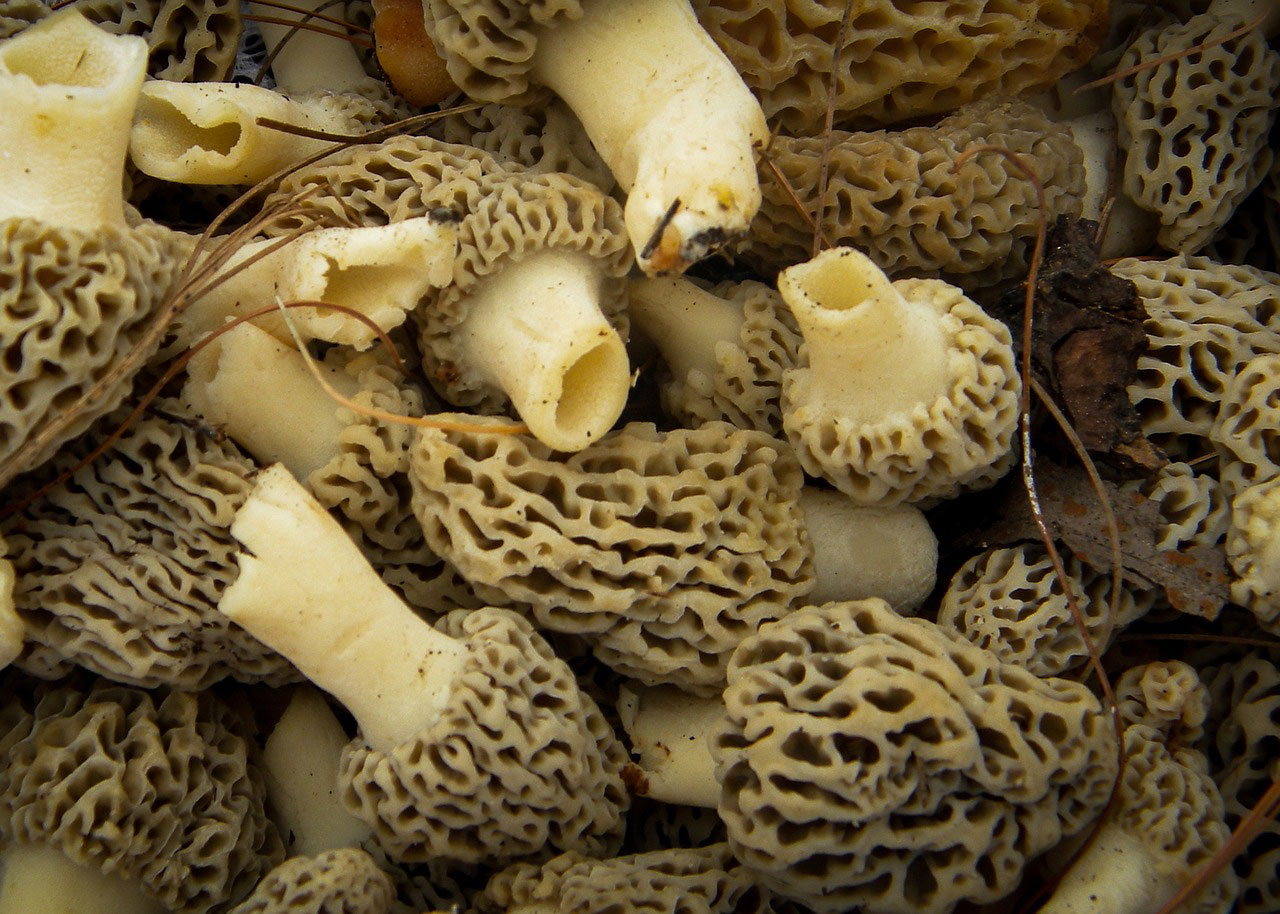
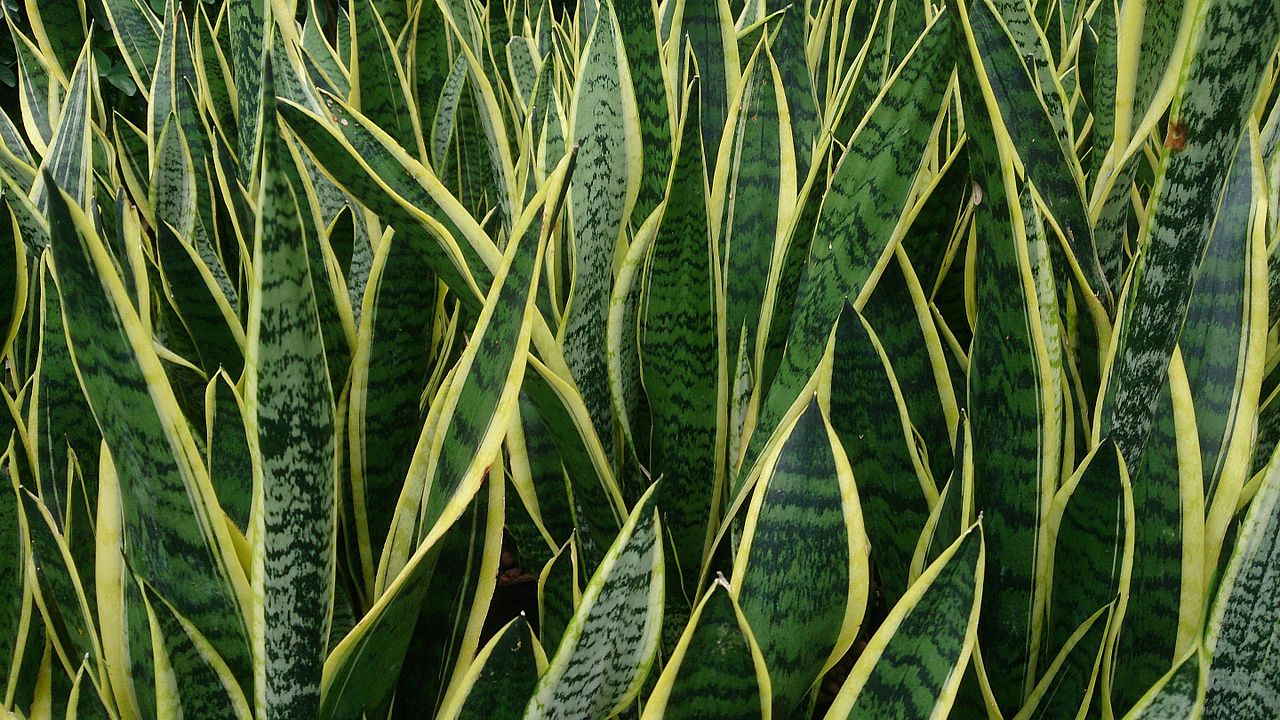
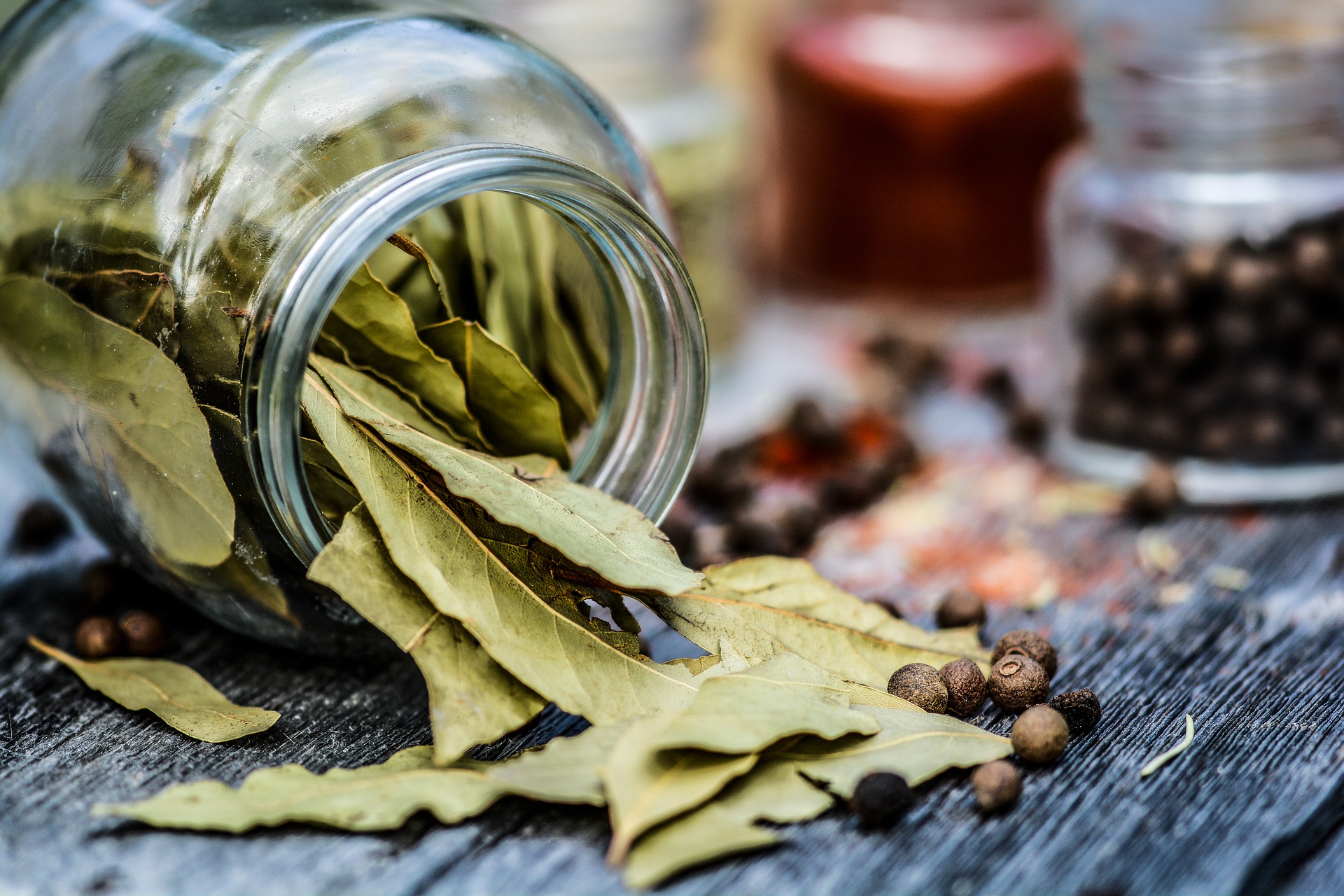
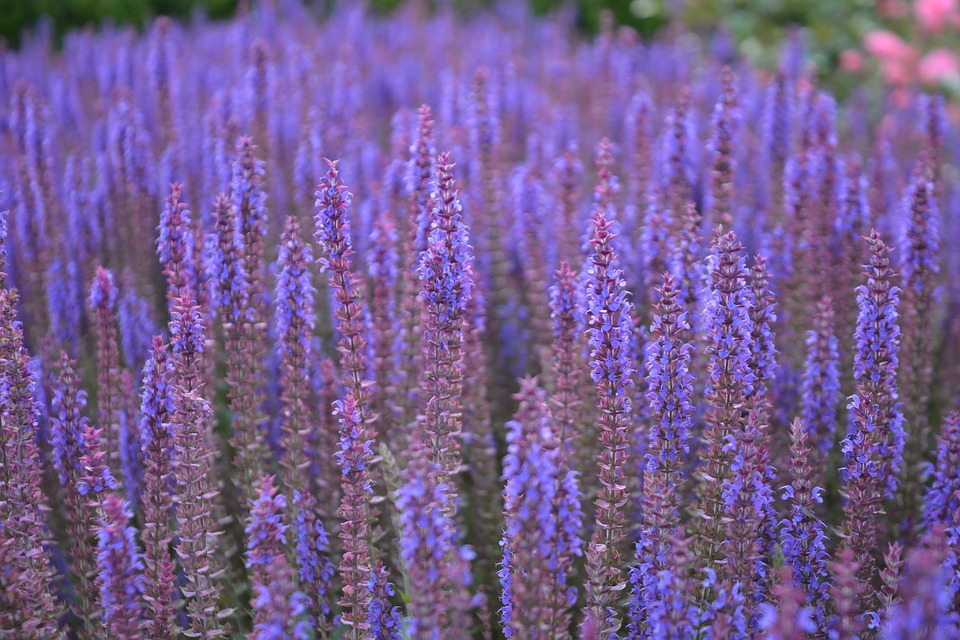
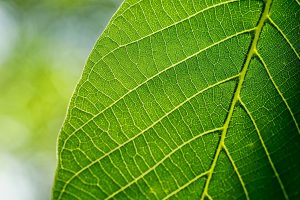
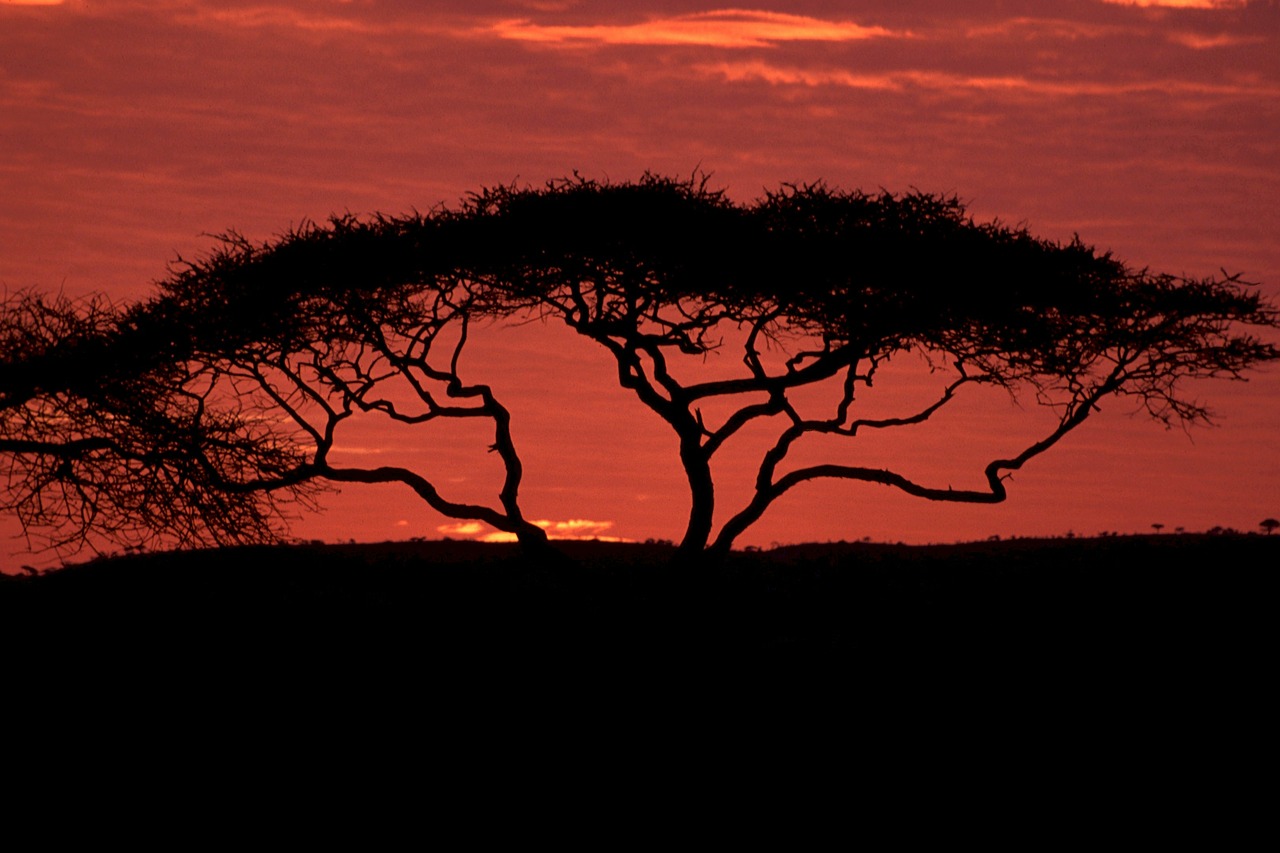
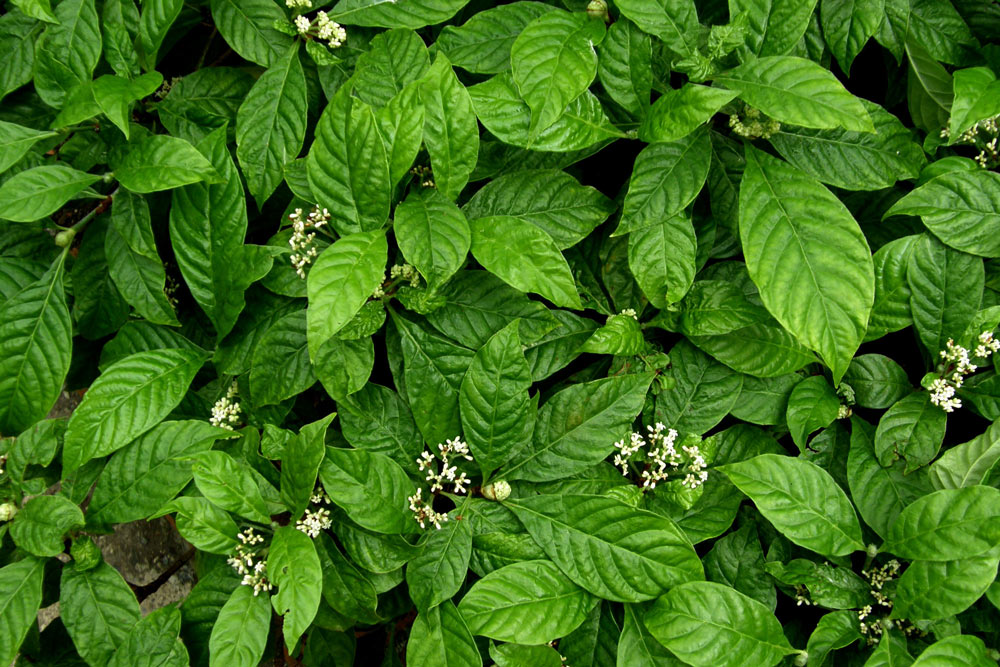
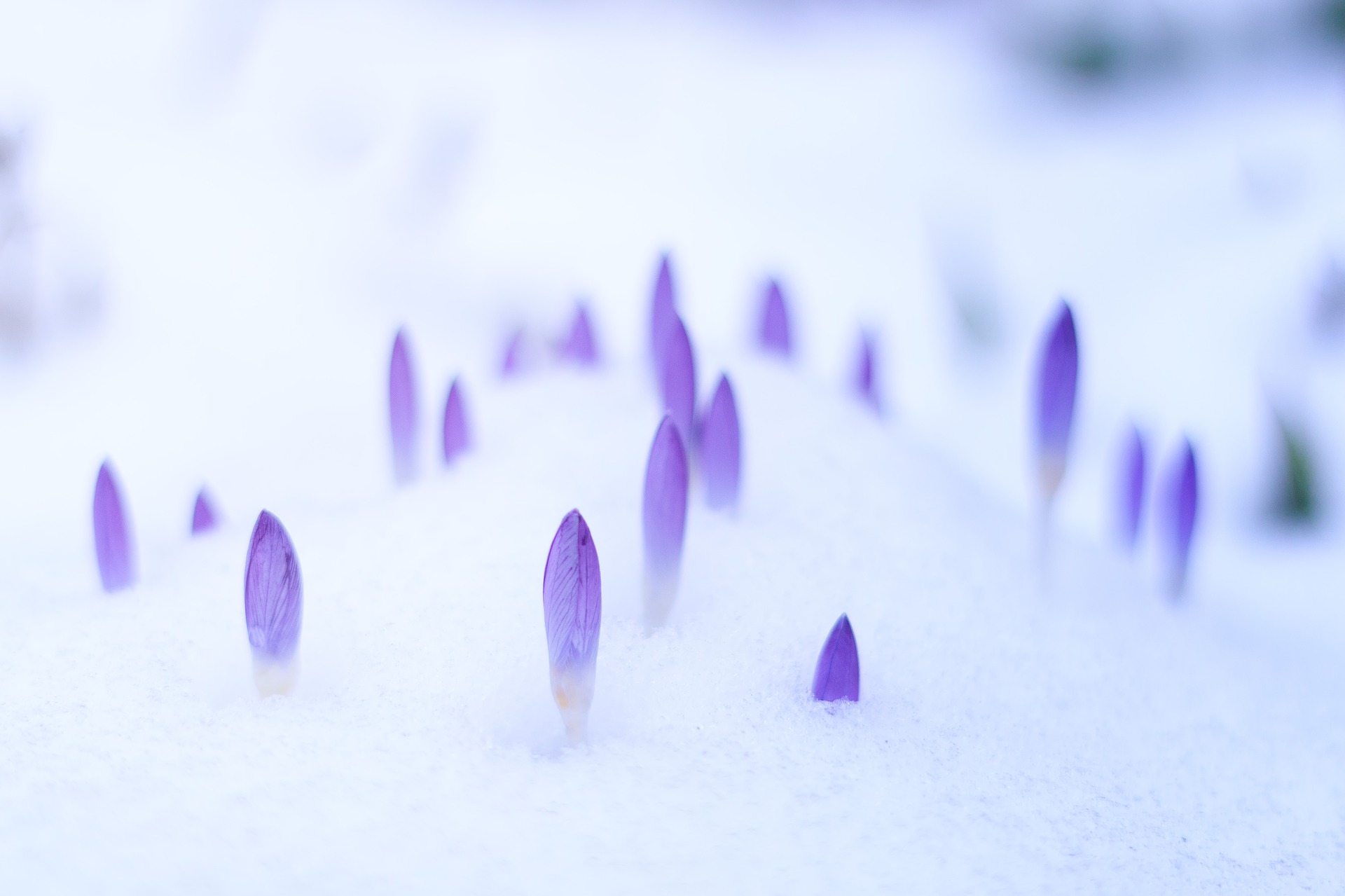
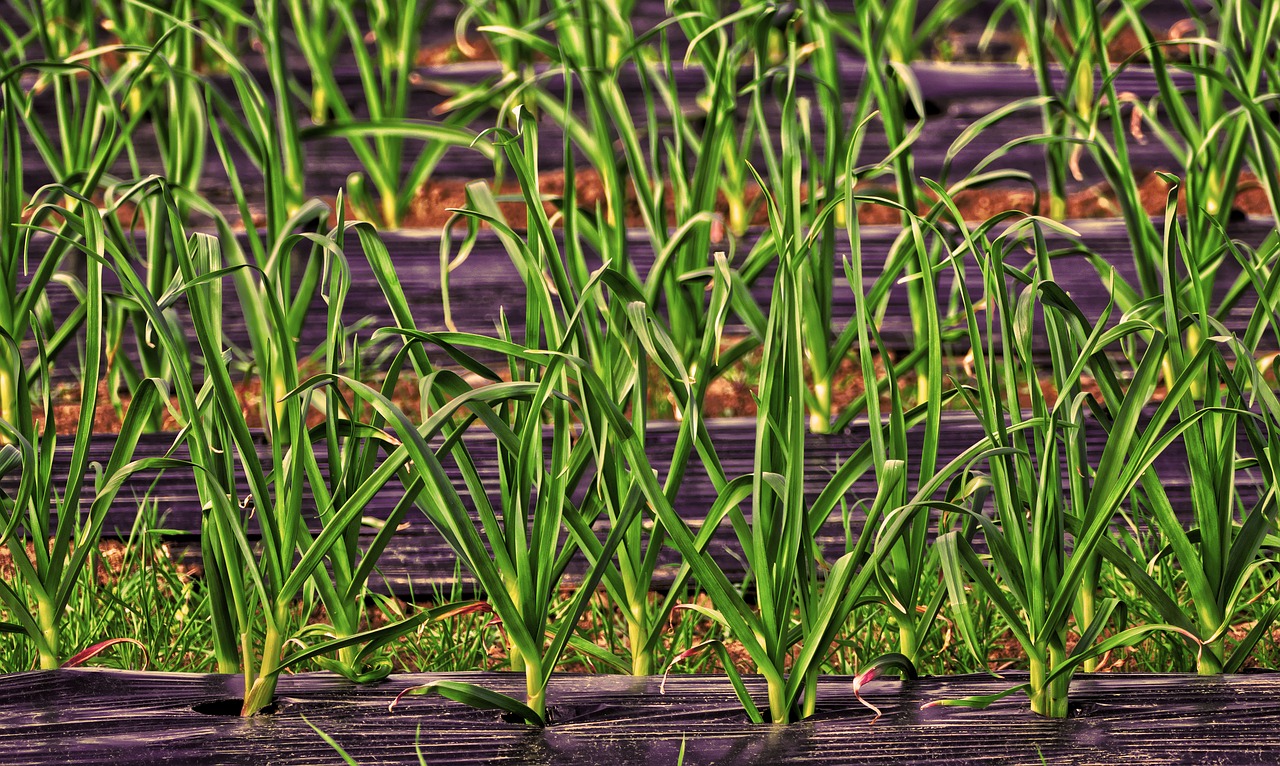
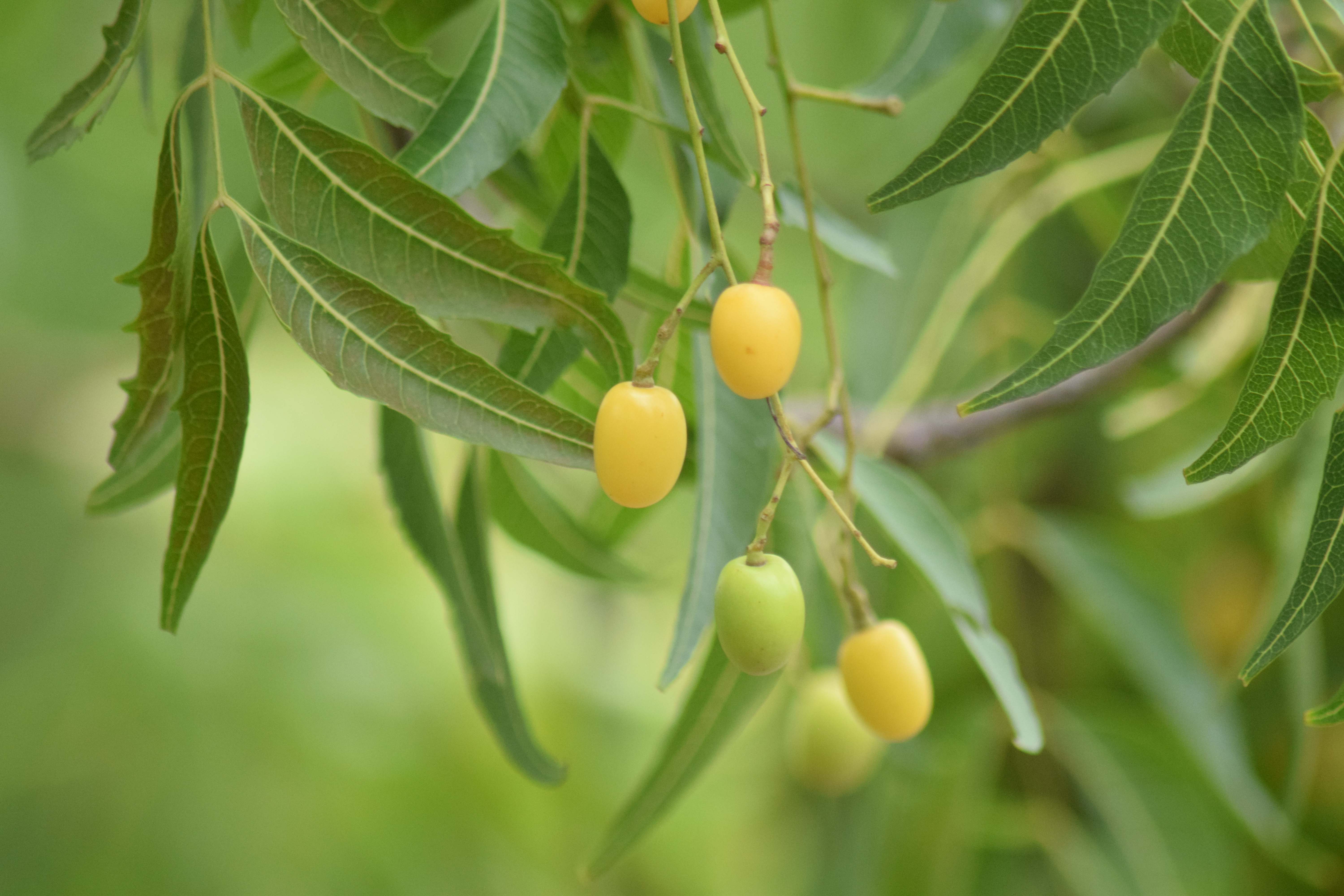
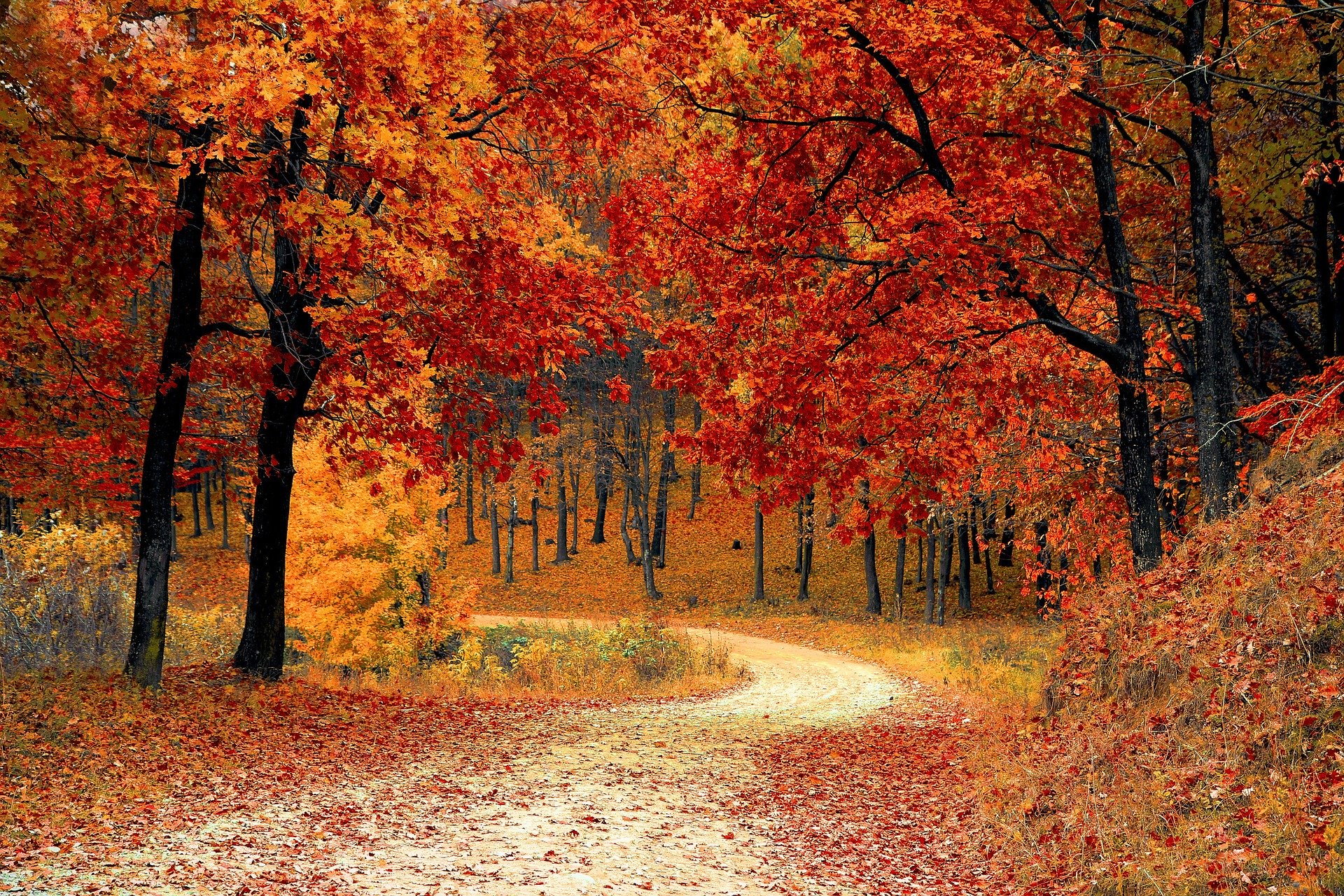
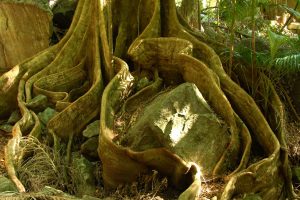

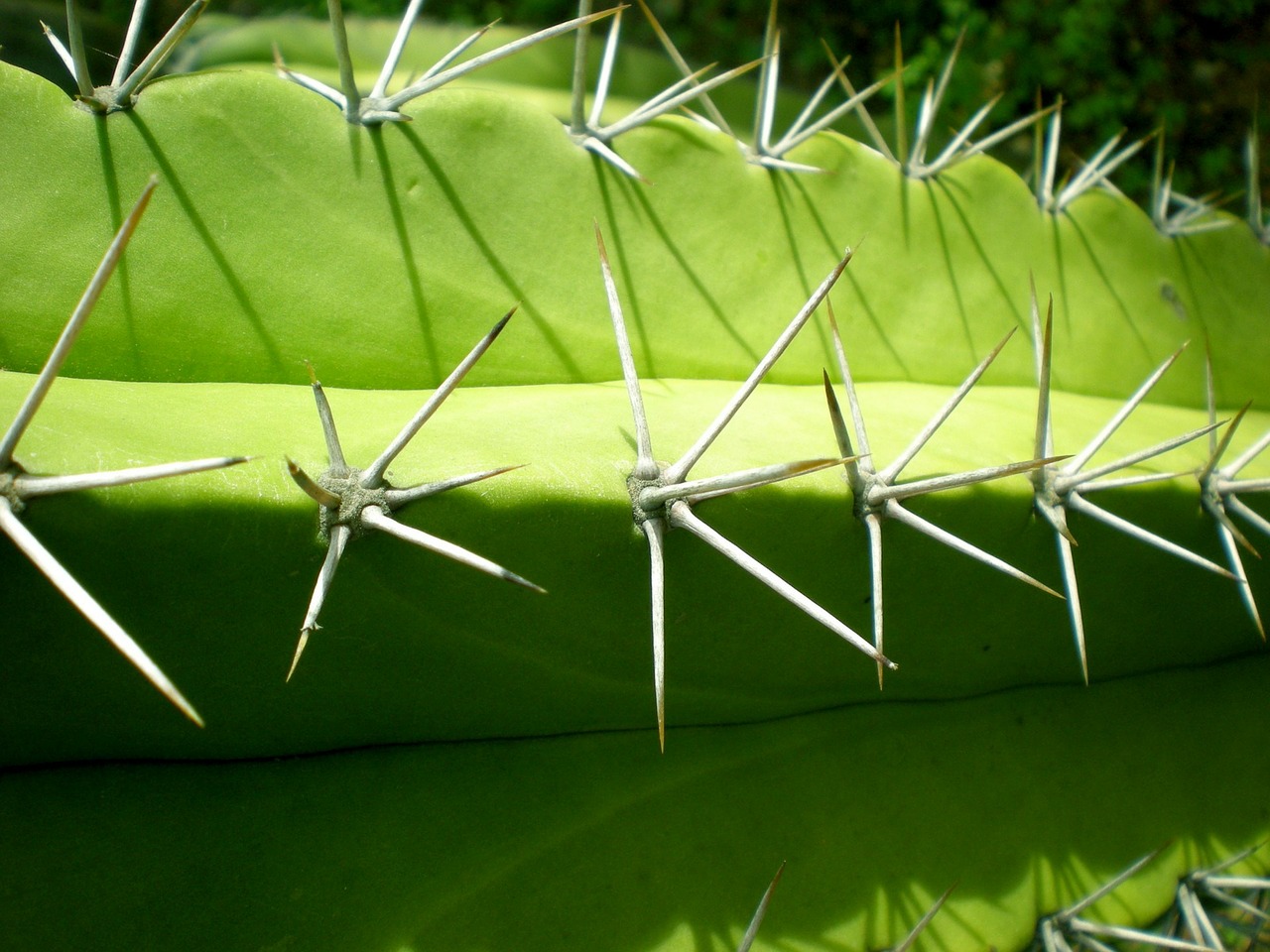
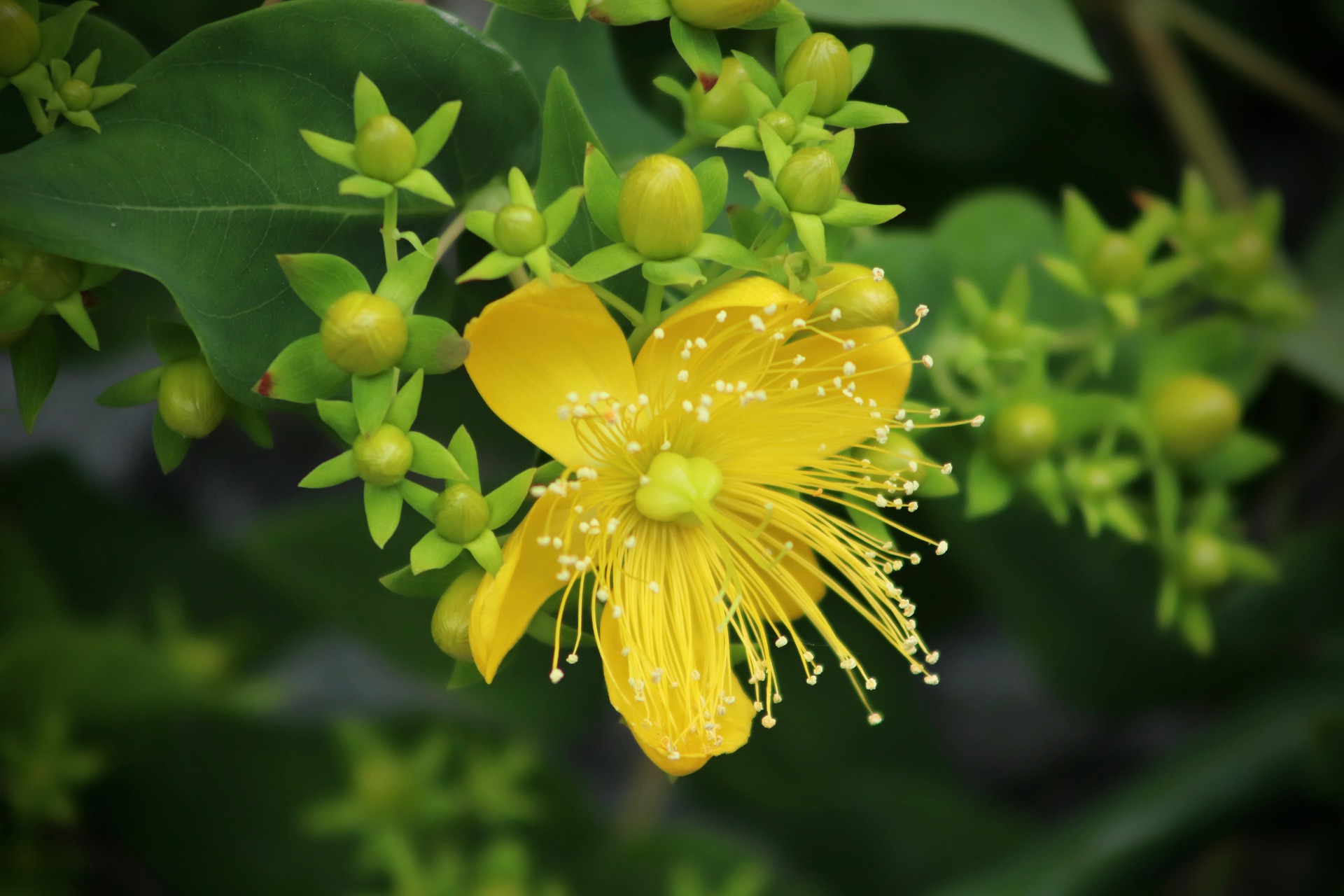
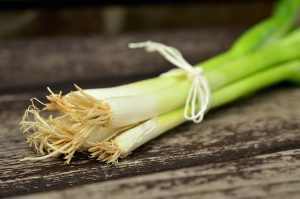
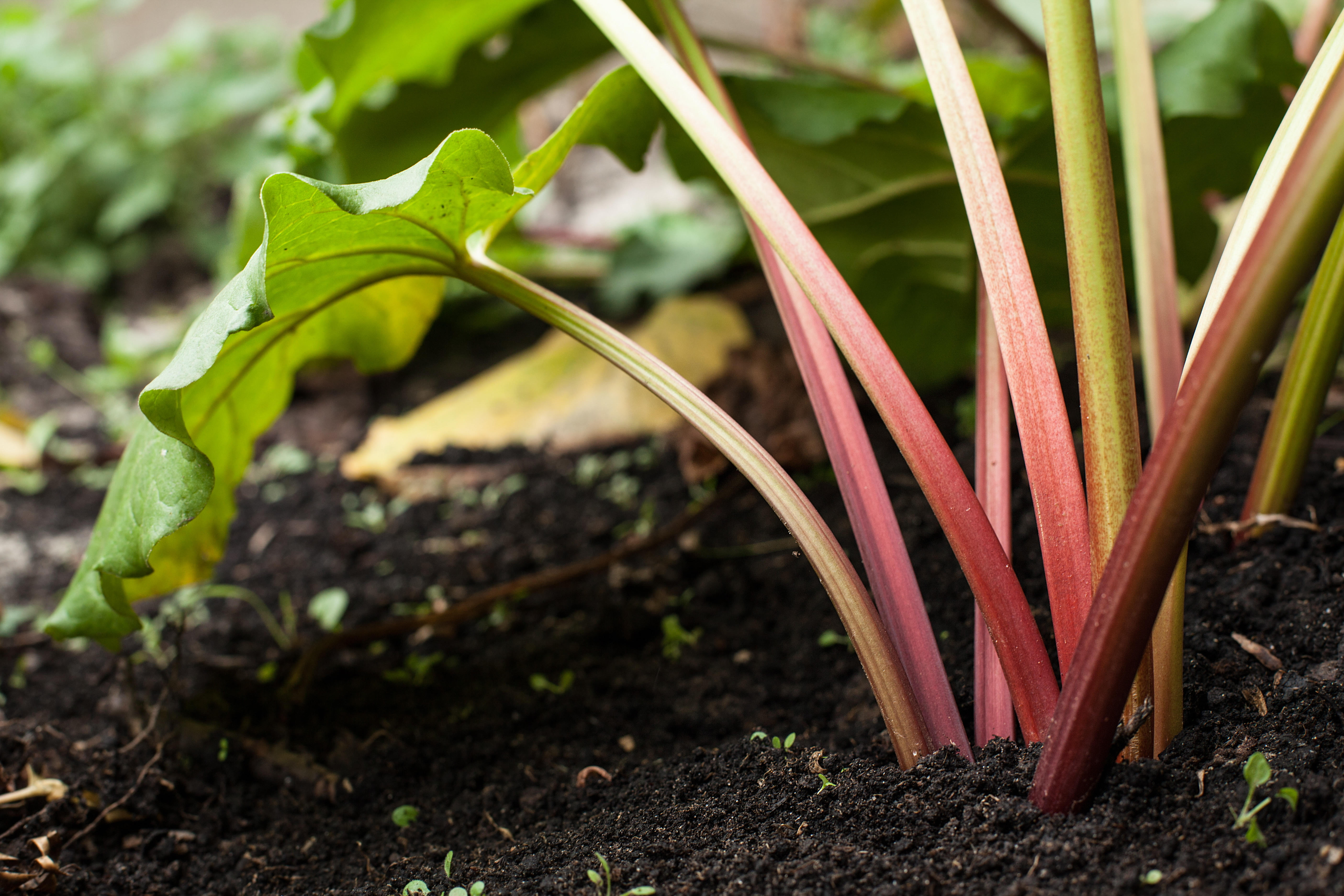
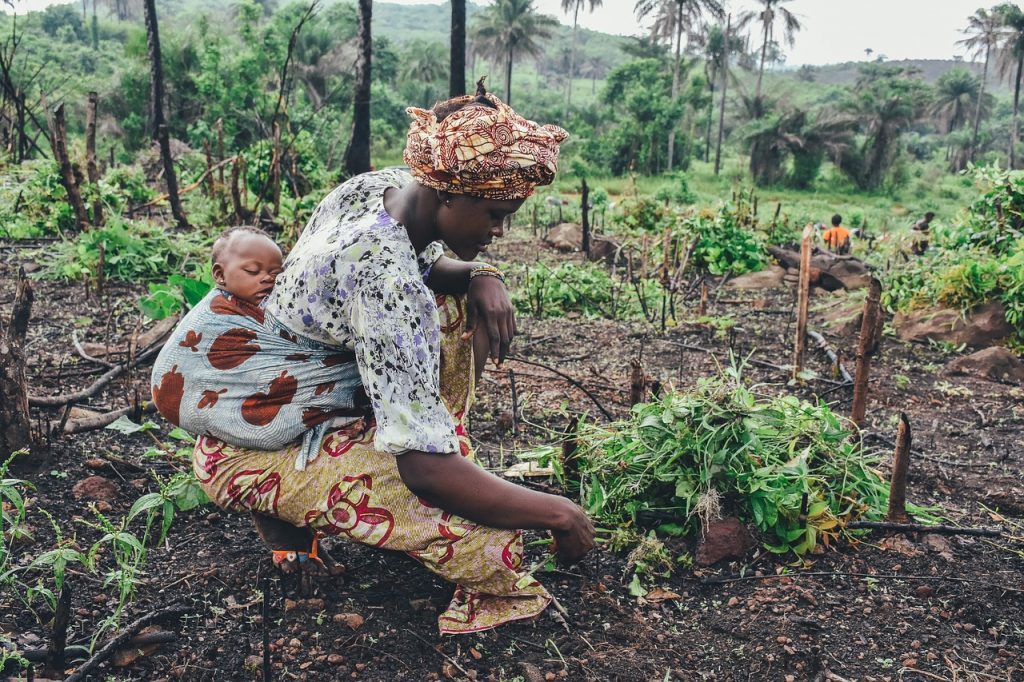
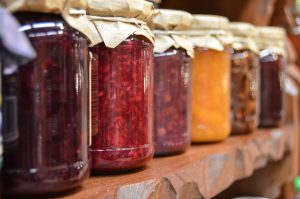
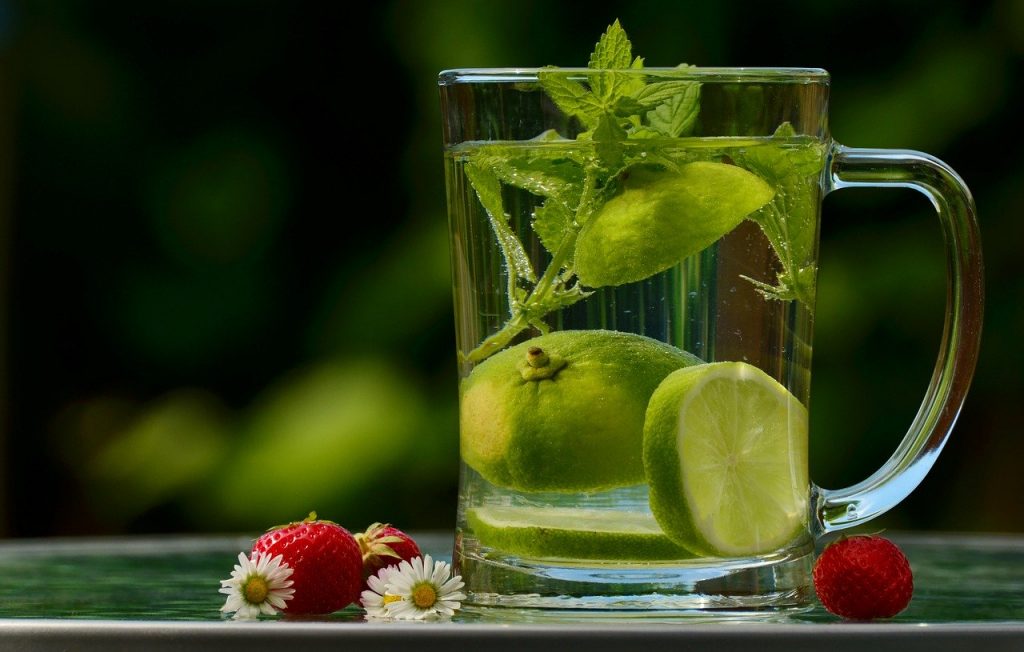
0 Comments